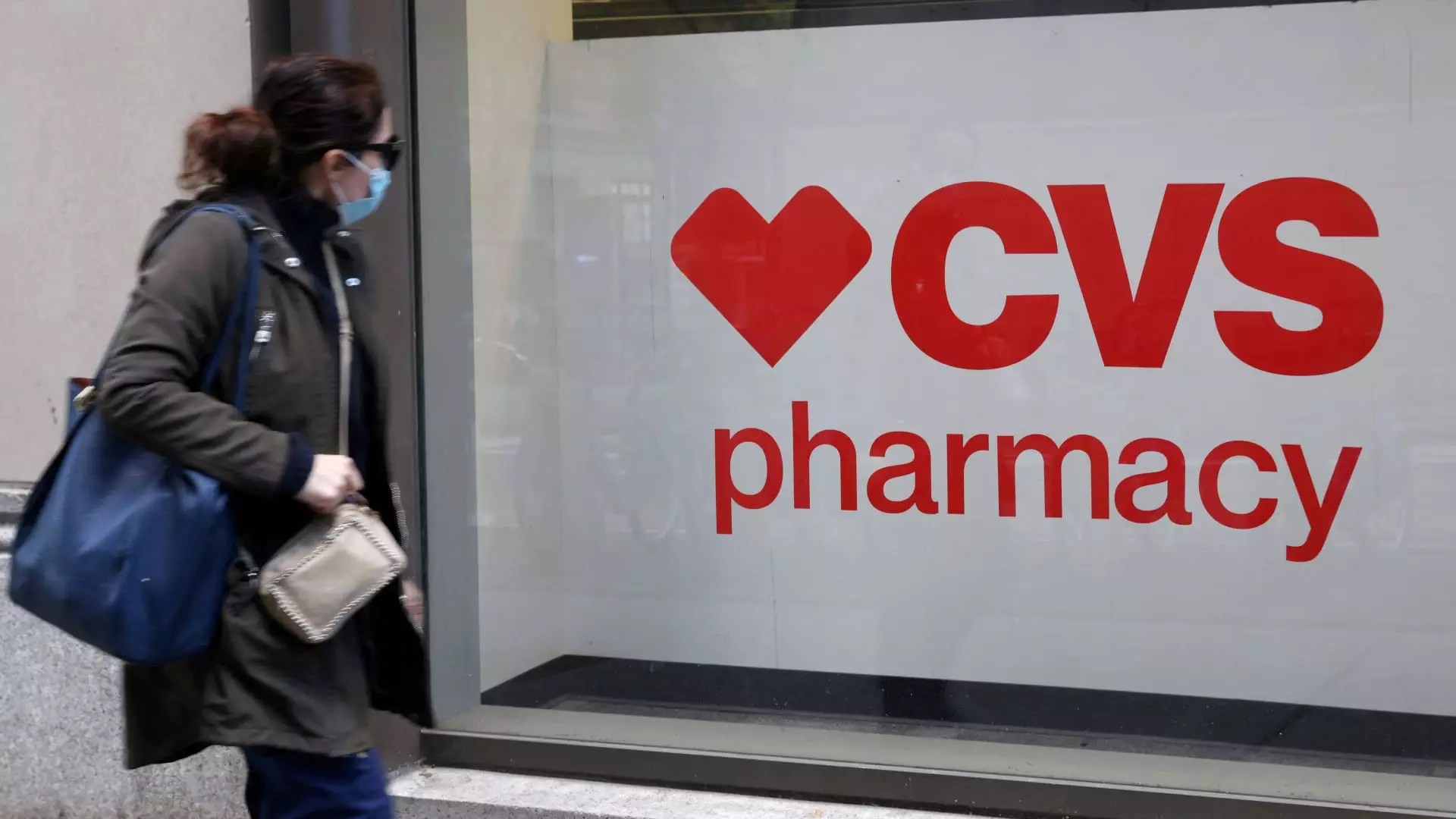In a challenging economic landscape, CVS Health’s recent third-quarter earnings report paints a complex picture of the retail pharmacy giant. With the company’s first quarterly results under the leadership of CEO David Joyner, there are signs that the organization faces significant hurdles, especially as it grapples with increased medical costs. This article delves into the essential elements of CVS’s performance, analyzing implications for its future while unpacking Joyner’s initial strategies and the overarching challenges the company faces.
CVS Health’s reported revenue of $95.43 billion for the third quarter marks a healthy growth of 6.3% compared to the previous year. This increase showcases strength in its pharmacy and insurance divisions, indicating that consumer engagement remains strong. However, the excitement surrounding soaring sales is tempered by a sobering net income of only $71 million (7 cents per share), a stark decline from $2.27 billion (or $1.75 per share) earned in the same period last year. Such a pronounced drop reflects the pressures created by increased medical costs which are encumbering the company’s overall profitability.
Further analysis reveals that adjusted earnings per share reached $1.09, significantly lower than Wall Street’s expected figure of $1.51. This shortfall underscores both the impact of unexpected costs and the challenges Joyner faces as he seeks to stabilize and revitalize the company’s financial performance. CVS’s situation has raised concerns among investors, particularly considering the elevated medical benefit ratio of 95.2%, compared to 85.7% from the previous year, indicating rising expenses relative to premiums collected.
In light of the current financial strain and investor dissatisfaction, Joyner’s leadership will face intense scrutiny. His commitment to establishing credibility and trust is pivotal for restoring confidence among stakeholders. To further bolster CVS’s direction, the company has appointed Steve Nelson as the new president of Aetna. Nelson’s previous experience as the CEO of UnitedHealthcare brings a wealth of insight that could be vital in navigating the competitive healthcare landscape. His immediate challenge will be to reassure investors that the insurance unit can adapt to its heightened costs and evolving market demands.
Additionally, CVS is engaging in a broader strategy to enhance operational effectiveness by conducting comprehensive reviews leading to significant restructuring of its workforce. The announcement of layoffs and the closing of 271 stores is part of a larger initiative to streamline operations and trim $2 billion in expenses over the coming years. It remains to be seen how these drastic measures will affect employee morale and customer perceptions moving forward.
The confidence of the investment community in CVS has been wavering, particularly after three consecutive quarters of reduced guidance. An activist investor’s pressure serves as a reminder of the critical need for swift, effective action. The decline of nearly 27% in CVS’s share price this year reflects a market wary of rising costs and uncertain management strategies. Joyner must now navigate the fine line between delivering disappointing news and providing a roadmap for recovery.
The company’s recent efforts, including a notable increase in share price following the earnings announcement, hint at an optimistic outlook. However, this rally is fragile and may quickly evaporate unless investors see substantial evidence of sustainable improvements. High medical costs, coupled with the need to manage rising expenses in the insurance market, pose a persistent threat to profitability.
On one hand, CVS’s pharmacy and consumer wellness division exhibited promising growth, contributing sales of $32.42 billion, an increase driven by higher prescription volumes. Conversely, the health services segment suffered as revenue dropped nearly 6% to $44.13 billion from the prior year. These figures reveal the necessity for CVS to focus not only on expanding revenue channels but also on proactively managing cost structures.
The company’s extensive reach with a 27.3% market share of retail pharmacy services indicates strong customer relationships and competitive positioning within the market despite current adversities. However, to capitalize on this advantage, CVS Health must evolve its healthcare delivery model and align it with patient needs while strategically managing costs.
As CVS Health charts its course following a tumultuous quarter, the combined forces of new leadership, cautious investor sentiment, and increasing operational challenges will define its immediate future. CEO David Joyner’s ability to communicate stability and create achievable goals is crucial to the firm’s revival strategy. A proactive approach to managing medical costs and leveraging market share can potentially reposition CVS Health back on solid financial ground. The road to recovery may be arduous, requiring patience and resilience from all stakeholders as CVS strives to redefine its operational landscape in an evolving healthcare market.


Leave a Reply